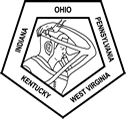<< Back to the abstract archive
Safety Of Ketorolac Administration After Major Cranial Surgery For Craniosynostosis Repair
Fatma Betul Tuncer, MD
Ananth Murthy, MD
Niyant Patel, MD
Cleveland Clinic and Akron Children's Hospital
2018-02-13
Presenter: Fatma Betul Tuncer, MD
Affidavit:
certify that the material proposed for presentation in this abstract has not been published in any scientific journal or previously presented at a major meeting.
Director Name: Frank Papay
Author Category: Fellow Plastic Surgery
Presentation Category: Clinical
Abstract Category: Craniomaxillofacial
Background:
Our goal in this study is to assess the risk of postoperative bleeding associated with ketorolac use after cranial vault remodeling (CVR) surgery and to investigate its safety profile and possible secondary risks and benefits.
Method:
All patients undergoing CVR for craniosynostosis at a single institution were retrospectively reviewed. Patients undergoing limited craniectomies were excluded. A total of 74 consecutive patients were included in the study: 44 in the ketorolac group and 30 in the control group. The primary outcome was the risk of bleeding associated with ketorolac. This was investigated by transfusion rate and change in hemoglobin(Hgb) over the postoperative period. Total analgesic use and emesis were also analyzed for each patient.
Results:
Ketorolac and control groups showed no statistically significant differences in terms of age, operative time or type of synostosis (simple vs complex). Only significant difference between the groups was a higher ratio of posterior CVR to anterior CVR in the ketorolac group. Intraoperative and postoperative transfusion rates were similar between both groups (16% vs 30%; 1/44 vs 2/30; ketorolac vs control, respectively). There was a similar decrease in Hgb in the postoperative period between the ketorolac and control groups (%10 vs %8.1, p=0.39). Patients in the ketorolac group required less opioid doses for pain management and had a shorter hospital stay.
Conclusion:
This study provides evidence for safe use of ketorolac in pediatric patients following major cranial vault remodeling surgery with secondary benefits such as less opioid consumption and shorter hospitalization.



